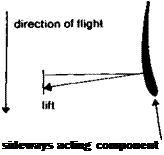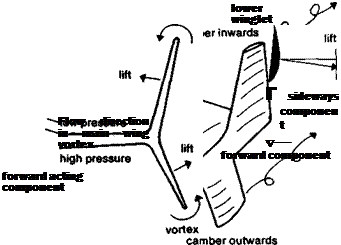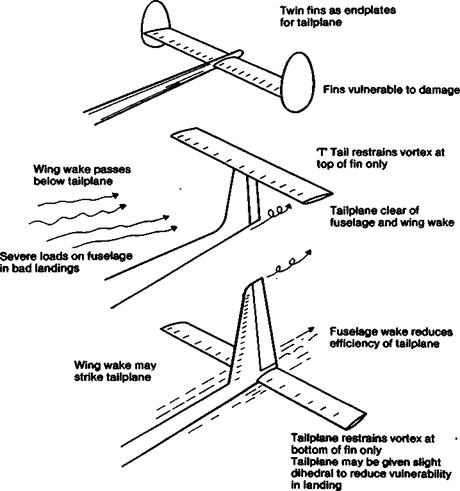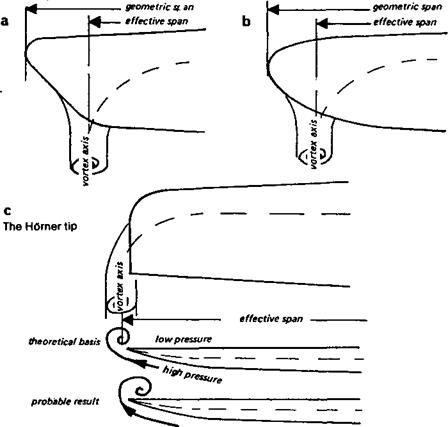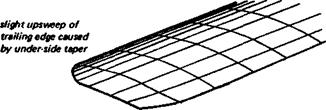WINGLETS AND TIP SAILS FOR MODELS
As far as model aircraft are concerned, very few tests have been performed with winglets or tip sails. They are unlikely to produce benefits unless they are properly adjusted and very few modellers have access to wind tunnels for testing purposes. If there is no restriction on the wingspan of the model, it is safer to increase aspect ratio than to use winglets unless these have been correctly designed. There are, even so, occasions when the wingspan is restricted by contest rules, or where an increase of aspect ratio (with a reduction in mean wing chord) might take the wing down to a low Reynolds number and so lose efficiency. In such cases winglets, especially of the Whitcomb type, offer some prospect of worthwhile gains.
TTie two metre sailplane class is a case in point. In 1980 tests of a model in this category were reported by Chuck Anderson (in Model Aviation, May 1980, pp. 52-5). On a wing with 25.4 cm chord, of rectangular planform, aspect ratio 7.87, winglets as shown in Figure 6.11 were fitted. These seemed to improve the performance while remaining within the two metre restriction. They also had some less desirable effects on lateral stability and control. It must also be pointed out that such additions to the tips are rather vulnerable to damage, especially in ground loops or landings which end with the model upside down.
For small free-flight models and even for F1A (A2) sailplanes, as mentioned above (6.4), wing taper is not generally desirable but the addition of winglets or sails to a rectangular wing may prove worthwhile. The Reynolds number of the mainplane would be unaffected and the tip vortex, providing the winglets were well designed, would be reduced. Anderson’s two metre sailplane, very wisely, was made with the angle of the winglets adjustable so that by repeated test flying, the best setting could be discovered.
Noel Falconer has used a refined winglet design on tailless sailplanes and electric powered models. Apart from saving drag, which is rather more severe on a swept-back wing, the winglets also serve as fins, providing very necessary lateral stability on the tailless aircraft.
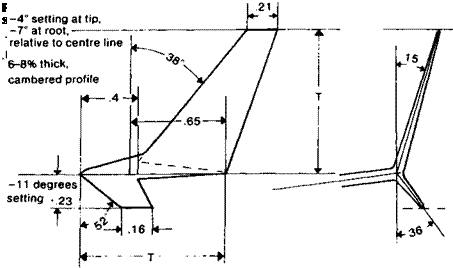 |
For comparison: NASA/Whitcomb winglet dimensions given as fractions of the mainplane tip chord.
Fig. 6.12
The wing of a modern full sized sailplane, using all the information gathered in recent decades about the best planform, wing tip shape and winglets (based on the Ventus 2).
|
|














